An Improved Res-UNet Model for Tree Species Classification Using Airborne High-Resolution Images
Abstract
1. Introduction
2. Materials and Methods
2.1. Study Area
2.2. Acquisition and Preprocessing of Remote Sensing Image Data
2.3. Ground Survey Data and Other Auxiliary Data
2.4. Datasets Production
2.5. Workflow Description
2.6. Network Structure
2.6.1. ResNet Network
2.6.2. ResNet-Unet Network
2.7. Conditional Random Field (CRF)
2.8. Network Training and Prediction
3. Results
3.1. Tree Species Classification Results with Different Training Samples
3.2. Tree Species Classification Results
4. Discussion
4.1. Parameters Affecting Model Classification Ability
4.1.1. Impact of CRFs on Classification Results
4.1.2. Effect of Bilinear Interpolation Instead of Deconvolution
4.2. Comparison of Improved Res-UNet with U-Net and ResNet Networks
4.3. Comparison of Classification Accuracy for Different Categories
4.4. Impact of Label Samples on Classification
5. Conclusions
Author Contributions
Funding
Acknowledgments
Conflicts of Interest
References
- Torabzadeh, H.; Leiterer, R.; Hueni, A.; Schaepman, M.E.; Morsdorf, F. Tree species classification in a temperate mixed forest using a combination of imaging spectroscopy and airborne laser scanning. Agric. For. Meteorol. 2019, 279, 107744. [Google Scholar] [CrossRef]
- Goldblatt, R.; Stuhlmacher, M.F.; Tellman, B.; Clinton, N.; Hanson, G.; Georgescu, M.; Wang, C.; Serrano-Candela, F.; Khandelwal, A.K.; Cheng, W.-H.; et al. Using Landsat and nighttime lights for supervised pixel-based image classification of urban land cover. Remote Sens. Environ. 2018, 205, 253–275. [Google Scholar] [CrossRef]
- Agüera, F.; Aguilar, F.J.; Aguilar, M.A. Using texture analysis to improve per-pixel classification of very high resolution images for mapping plastic greenhouses. ISPRS J. Photogramm. Remote Sens. 2008, 63, 635–646. [Google Scholar] [CrossRef]
- Li, Q.; Wong, F.K.K.; Fung, T. Classification of Mangrove Species Using Combined WordView-3 and LiDAR Data in Mai Po Nature Reserve, Hong Kong. Remote Sens. 2019, 11, 2114. [Google Scholar] [CrossRef]
- Pham, L.T.H.; Brabyn, L.; Ashraf, S. Combining QuickBird, LiDAR, and GIS topography indices to identify a single native tree species in a complex landscape using an object-based classification approach. Int. J. Appl. Earth Obs. Geoinf. 2016, 50, 187–197. [Google Scholar] [CrossRef]
- Ma, L.; Li, M.; Ma, X.; Cheng, L.; Du, P.; Liu, Y. A review of supervised object-based land-cover image classification. Remote Sens. 2017, 130, 277–293. [Google Scholar] [CrossRef]
- Zhang, C.; Yue, P.; Tapete, D.; Shangguan, B.; Wang, M.; Wu, Z. A multi-level context-guided classification method with object-based convolutional neural network for land cover classification using very high resolution remote sensing images. Int. J. Appl. Earth Obs. Geoinf. 2020, 88, 102086. [Google Scholar] [CrossRef]
- Mugiraneza, T.; Nascetti, A.; Ban, Y. WorldView-2 Data for Hierarchical Object-Based Urban Land Cover Classification in Kigali: Integrating Rule-Based Approach with Urban Density and Greenness Indices. Remote Sens. 2019, 11, 2128. [Google Scholar] [CrossRef]
- Ke, Y.; Quackenbush, L.J.; Im, J. Synergistic use of QuickBird multispectral imagery and LIDAR data for object-based forest species classification. Remote Sens. Environ. 2010, 114, 1141–1154. [Google Scholar] [CrossRef]
- Immitzer, M.; Atzberger, C.; Koukal, T. Tree Species Classification with Random Forest Using Very High Spatial Resolution 8-Band WorldView-2 Satellite Data. Remote Sens. 2012, 4, 2661–2693. [Google Scholar] [CrossRef]
- Li, D.; Ke, Y.; Gong, H.; Li, X. Object-Based Urban Tree Species Classification Using Bi-Temporal WorldView-2 and WorldView-3 Images. Remote Sens. 2015, 7, 16917–16937. [Google Scholar] [CrossRef]
- Wolf, N. Object Features for Pixel-based Classi cation of Urban Areas Comparing Different Machine Learning Algorithms. Photogramm. Fernerkund. Geoinf. 2013, 2013, 149–161. [Google Scholar] [CrossRef]
- Zhou, J.; Qin, J.; Gao, K.; Leng, H. SVM-based soft classification of urban tree species using very high-spatial resolution remote-sensing imagery. Int. J. Remote Sens. 2016, 37, 2541–2559. [Google Scholar] [CrossRef]
- Dalponte, M.; Ene, L.T.; Marconcini, M.; Gobakken, T.; Næsset, E. Semi-supervised SVM for individual tree crown species classification. ISPRS J. Photogramm. Remote Sens. 2015, 110, 77–87. [Google Scholar] [CrossRef]
- Lecun, Y.; Bengio, Y.; Hinton, G. Deep learning. Nature 2015, 521, 436. [Google Scholar] [CrossRef]
- Chen, Y.; Jiang, H.; Li, C.; Jia, X.; Ghamisi, P. Deep Feature Extraction and Classification of Hyperspectral Images Based on Convolutional Neural Networks. IEEE Trans. Geosci. Remote Sens. 2016, 54, 6232–6251. [Google Scholar] [CrossRef]
- Makantasis, K.; Karantzalos, K.; Doulamis, A.; Doulamis, N. Deep Supervised Learning for Hyperspectral Data Classification through Convolutional Neural Networks. In Proceedings of the 2015 IEEE International Geoscience and Remote Sensing Symposium (IGARSS), Milan, Italy, 26–31 July 2015; pp. 4959–4962. [Google Scholar]
- Alipourfard, T.; Arefi, H.; Mahmoudi, S. A Novel Deep Learning Framework by Combination of Subspace-Based Feature Extraction and Convolutional Neural Networks for Hyperspectral Images Classification. In Proceedings of the IGARSS 2018—2018 IEEE International Geoscience and Remote Sensing Symposium, Valencia, Spain, 22–27 July 2018; pp. 4780–4783. [Google Scholar]
- Hinton, G.; Osindero, S.; Welling, M.; Teh, Y.-W. Unsupervised discovery of nonlinear structure using contrastive backpropagation. Cogn. Sci. 2006, 30, 725–731. [Google Scholar] [CrossRef]
- Lv, X.W.; Ming, D.P.; Lu, T.T.; Zhou, K.Q.; Wang, M.; Bao, H.Q. A New Method for Region-Based Majority Voting CNNs for Very High Resolution Image Classification. Remote Sens. 2018, 10, 1946. [Google Scholar] [CrossRef]
- Lu, S.; Wang, B.; Wang, H.; Chen, L.; Linjian, M.; Zhang, X. A real-time object detection algorithm for video. Comput. Electr. Eng. 2019, 77, 398–408. [Google Scholar] [CrossRef]
- Tong, X.-Y.; Xia, G.-S.; Lu, Q.; Shen, H.; Li, S.; You, S.; Zhang, L. Land-cover classification with high-resolution remote sensing images using transferable deep models. Remote Sens. Environ. 2020, 237, 111322. [Google Scholar] [CrossRef]
- Guo, W.; Wu, R.; Chen, Y.; Zhu, X. Deep Learning Scene Recognition Method Based on Localization Enhancement. Sensors 2018, 18, 3376. [Google Scholar] [CrossRef] [PubMed]
- Hua, Y.; Mou, L.; Zhu, X.X. LAHNet: A Convolutional Neural Network Fusing Low- and High-Level Features for Aerial Scene Classification. In Proceedings of the IGARSS 2018—2018 IEEE International Geoscience and Remote Sensing Symposium, Valencia, Spain, 22–27 July 2018; pp. 4728–4731. [Google Scholar]
- Kilic, E.; Ozturk, S. A subclass supported convolutional neural network for object detection and localization in remote-sensing images. Int. J. Remote Sens. 2019, 40, 1–20. [Google Scholar] [CrossRef]
- Krizhevsky, A.; Sutskever, I.; Hinton, G. ImageNet Classification with Deep Convolutional Neural Networks. Commun. ACM 2012, 60, 84–90. [Google Scholar] [CrossRef]
- Russakovsky, O.; Deng, J.; Su, H.; Krause, J.; Satheesh, S.; Ma, S.; Huang, Z.; Karpathy, A.; Khosla, A.; Bernstein, M. ImageNet Large Scale Visual Recognition Challenge. Int. J. Comput. Vis. 2015, 115, 211–252. [Google Scholar] [CrossRef]
- He, X.; Zou, Z.; He, C.; Zhang, J. High-score image scene classification based on joint saliency and multi-layer convolutional neural network. Acta Geod. Geophys. 2016, 45, 1073–1080. [Google Scholar]
- Zhang, Y.L.; Yuan, Y.; Feng, Y.C.; Lu, X.Q. Hierarchical and Robust Convolutional Neural Network for Very High-Resolution Remote Sensing Object Detection. IEEE Trans. Geosci. Remote Sens. 2019, 57, 5535–5548. [Google Scholar] [CrossRef]
- Khan, N.; Chaudhuri, U.; Banerjee, B.; Chaudhuri, S. Graph convolutional network for multi-label VHR remote sensing scene recognition. Neurocomputing 2019, 357, 36–46. [Google Scholar] [CrossRef]
- Sun, Y.; Huang, J.; Ao, Z.; Lao, D.; Xin, Q. Deep Learning Approaches for the Mapping of Tree Species Diversity in a Tropical Wetland Using Airborne LiDAR and High-Spatial-Resolution Remote Sensing Images. Forests 2019, 10, 1047. [Google Scholar] [CrossRef]
- Hartling, S.; Sagan, V.; Sidike, P.; Maimaitijiang, M.; Carron, J. Urban Tree Species Classification Using a WorldView-2/3 and LiDAR Data Fusion Approach and Deep Learning. Sensing 2019, 19, 1284. [Google Scholar] [CrossRef]
- Kim, P. Convolutional Neural Network; Apress: Berkeley, CA, USA, 2017. [Google Scholar]
- Long, J.; Shelhamer, E.; Darrell, T. Fully Convolutional Networks for Semantic Segmentation. In Proceedings of the Conference on Computer Vision and Pattern Recognition (CVPR), Boston, MA, USA, 7–12 June 2015; pp. 640–651. [Google Scholar]
- Ronneberger, O.; Fischer, P.; Brox, T. U-Net: Convolutional Networks for Biomedical Image Segmentation. Medical Image Computing and Computer-Assisted Intervention; Springer: Cham, Switzerland, 18 November 2015; pp. 234–241. [Google Scholar]
- Fang, X.; Wang, G.; Yang, H.; Liu, H.; Yan, L. High Resolution Remote Sensing Image Classification Based on Mean Drift Segmentation and Full Convolutional Neural Network. Laser Optoelectron. Prog. 2017, 55, 446–454. [Google Scholar]
- Fu, G.; Liu, C.; Zhou, R.; Sun, T.; Zhang, Q. Classification for High Resolution Remote Sensing Imagery Using a Fully Convolutional Network. Remote Sens. 2017, 9, 498. [Google Scholar] [CrossRef]
- Flood, N.; Watson, F.; Collett, L. Using a U-net convolutional neural network to map woody vegetation extent from high resolution satellite imagery across Queensland, Australia. Int. J. Appl. Earth Obs. Geoinf. 2019, 82, 101897. [Google Scholar] [CrossRef]
- He, K.; Zhang, X.; Ren, S. Deep Residual Learning for Image Recognition. In Proceedings of the 2016 IEEE Conference on Computer Vision and Pattern Recognition(CVPR), Las Vegas, NV, USA, 27–30 June 2016; pp. 770–778. [Google Scholar]
- Chu, Z.; Tian, T.; Feng, R.; Wang, L. Sea-Land Segmentation With Res-UNet And Fully Connected CRF. In Proceedings of the IGARSS 2019—2019 IEEE International Geoscience and Remote Sensing Symposium, Yokohama, Japan, 28 July–2 August 2019; pp. 3840–3843. [Google Scholar]
- Xu, Y.; Wu, L.; Xie, Z.; Chen, Z. Building Extraction in Very High Resolution Remote Sensing Imagery Using Deep Learning and Guided Filters. Remote Sens. 2018, 10, 144. [Google Scholar] [CrossRef]
- Zhang, P.; Ke, Y.; Zhang, Z.; Wang, M.; Li, P.; Zhang, S. Urban Land Use and Land Cover Classification Using Novel Deep Learning Models Based on High Spatial Resolution Satellite Imagery. Sensing 2018, 18, 3717. [Google Scholar] [CrossRef] [PubMed]
- Introduction of Gaofeng Forest Farm. Available online: http://www.gaofenglinye.com.cn/lcjj/index_13.aspx (accessed on 28 February 2020).
- Pang, Y.; Li, Z.; Ju, H.; Lu, H.; Jia, W.; Si, L.; Guo, Y.; Liu, Q.; Li, S.; Liu, L.; et al. LiCHy: The CAF’s LiDAR, CCD and Hyperspectral Integrated Airborne Observation System. Remote Sens. 2016, 8, 398. [Google Scholar] [CrossRef]
- Smith, P.R. Bilinear interpolation of digital images. Ultramicroscopy 1981, 6, 201–204. [Google Scholar] [CrossRef]
- Kingma, D.; Ba, J. Adam: A Method for Stochastic Optimization. Comput. Sci. 2014, arxiv:1412.6980. [Google Scholar]
- Jia, S.; Zhuang, J.Y.; Deng, L.; Zhu, J.S.; Xu, M.; Zhou, J.; Jia, X.P. 3-D GaussianGabor Feature Extraction and Selection for Hyperspectral Imagery Classification. IEEE Trans. Geosci. Remote Sens. 2019, 57, 8813–8826. [Google Scholar] [CrossRef]
- Fang, B.; Li, Y.; Zhang, H.; Chan, J.C.-W. Collaborative learning of lightweight convolutional neural network and deep clustering for hyperspectral image semi-supervised classification with limited training samples. ISPRS J. Photogramm. Remote Sens. 2020, 161, 164–178. [Google Scholar] [CrossRef]
- Liu, Y.; Zhou, Y.; Liu, X.; Dong, F.; Wang, C.; Wang, Z. Wasserstein GAN-Based Small-Sample Augmentation for New-Generation Artificial Intelligence: A Case Study of Cancer-Staging Data in Biology. Engineering 2019, 5, 156–163. [Google Scholar] [CrossRef]

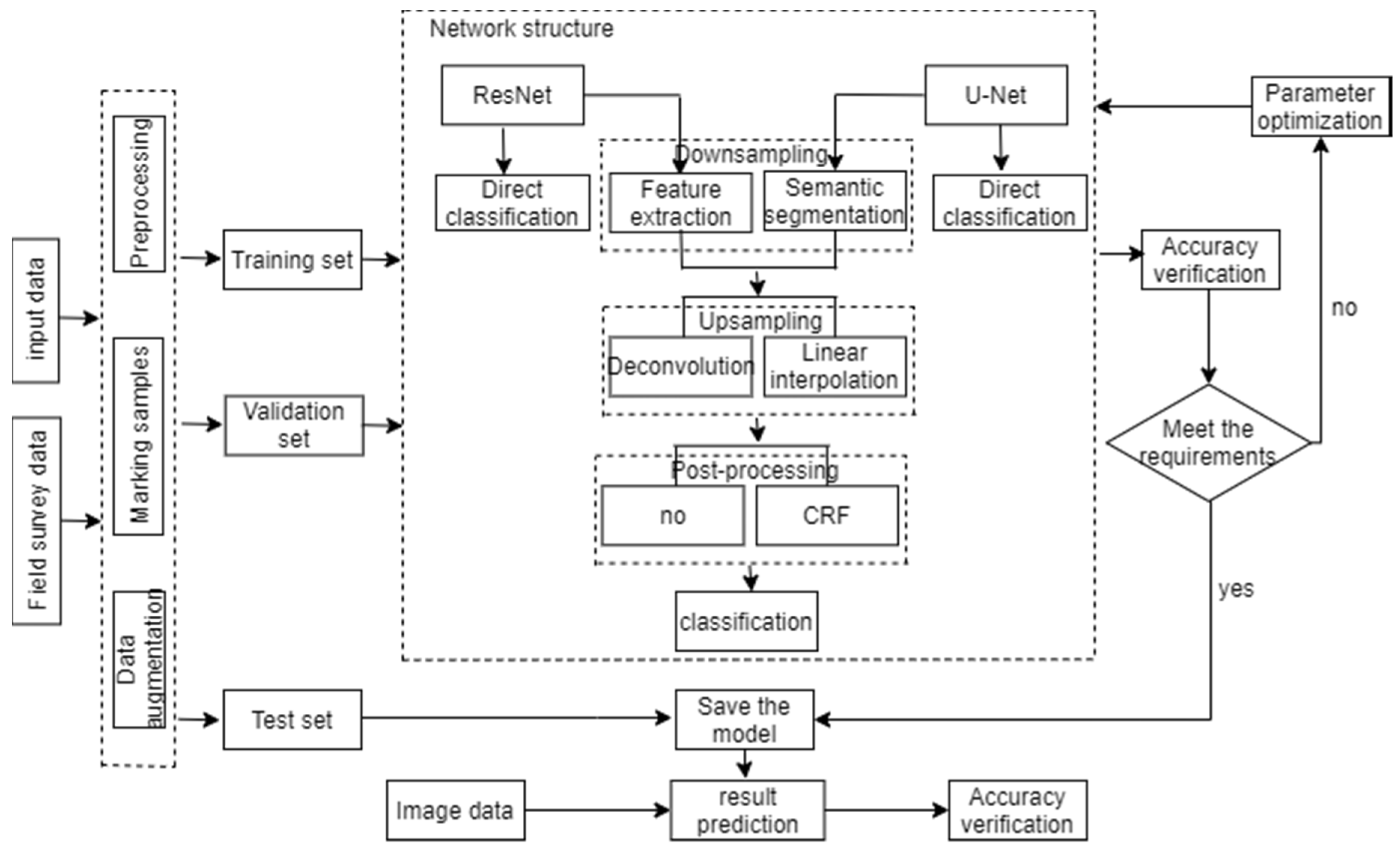
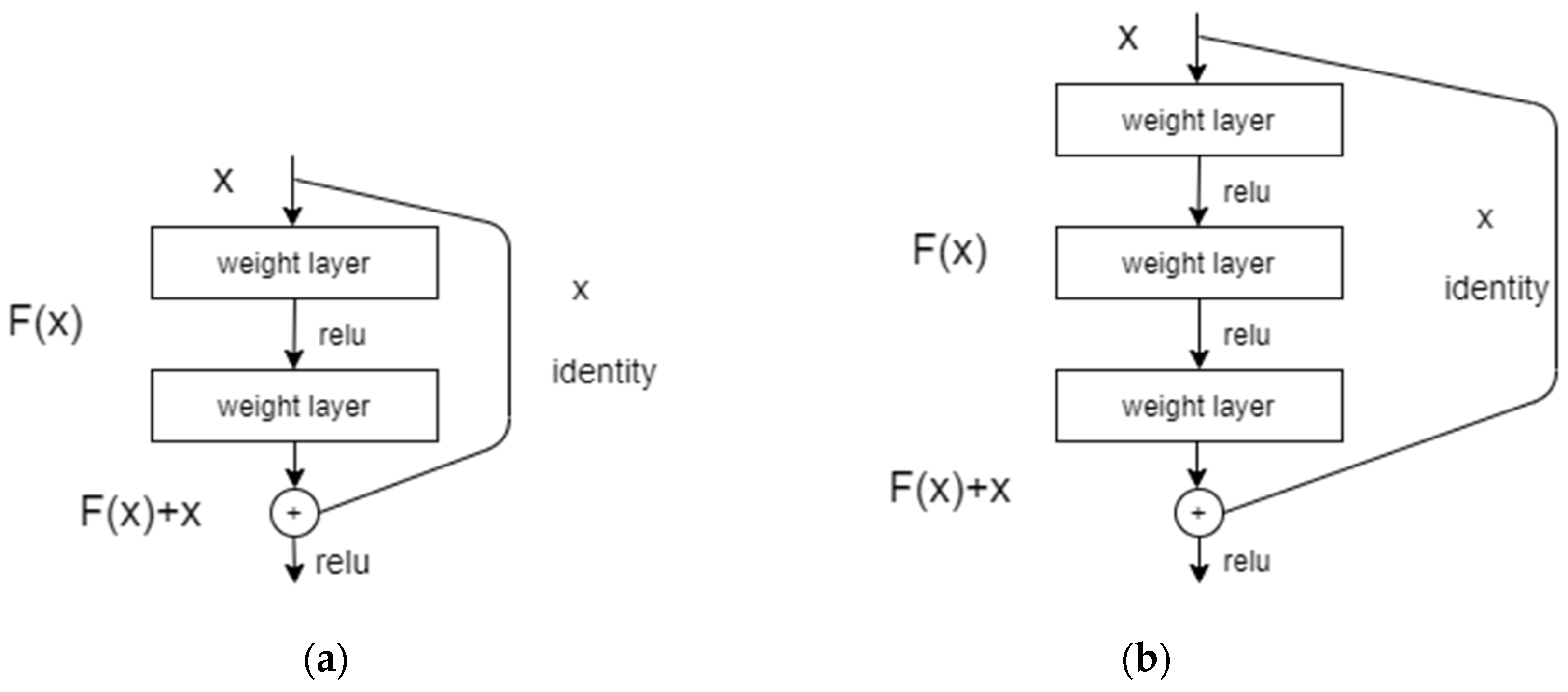
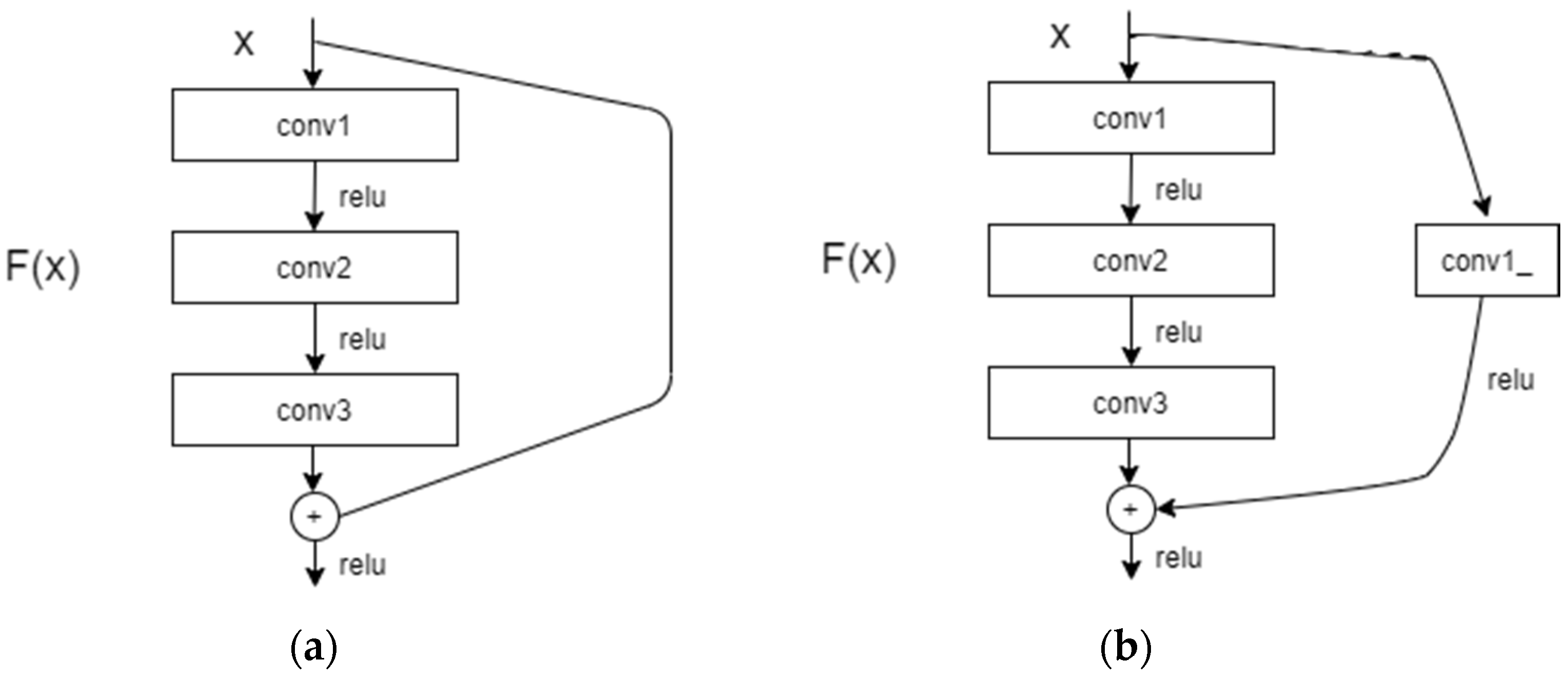

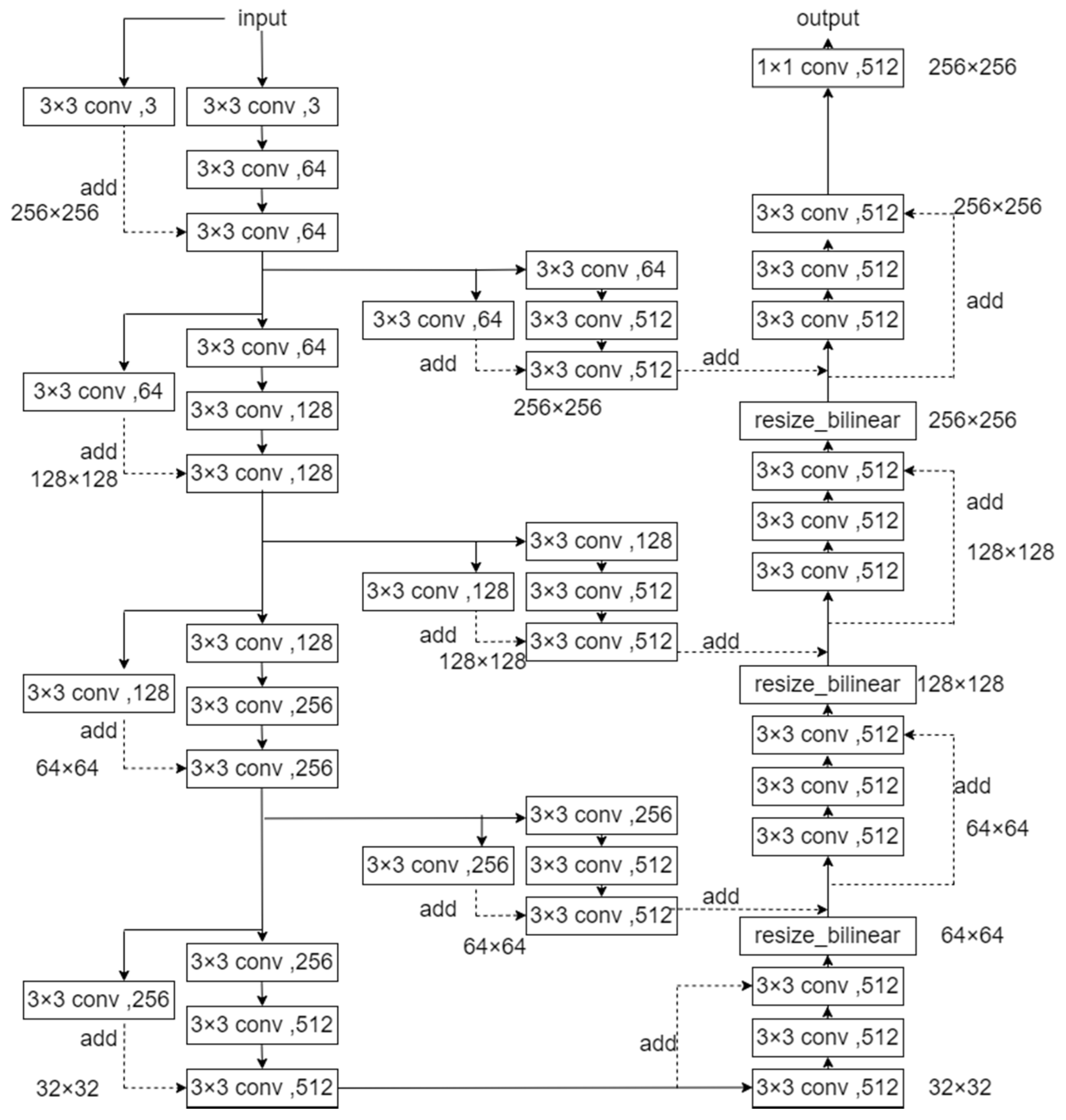
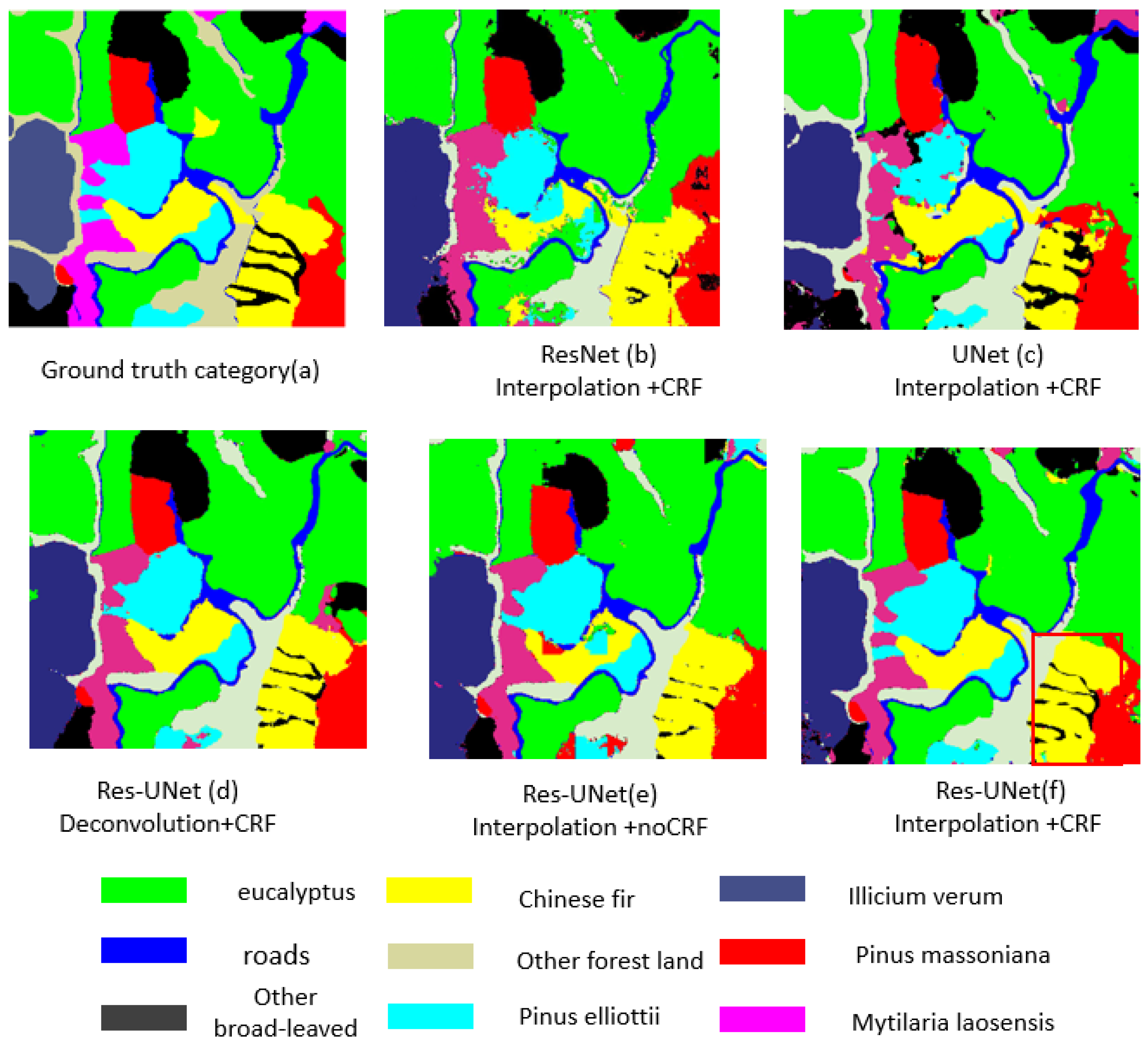
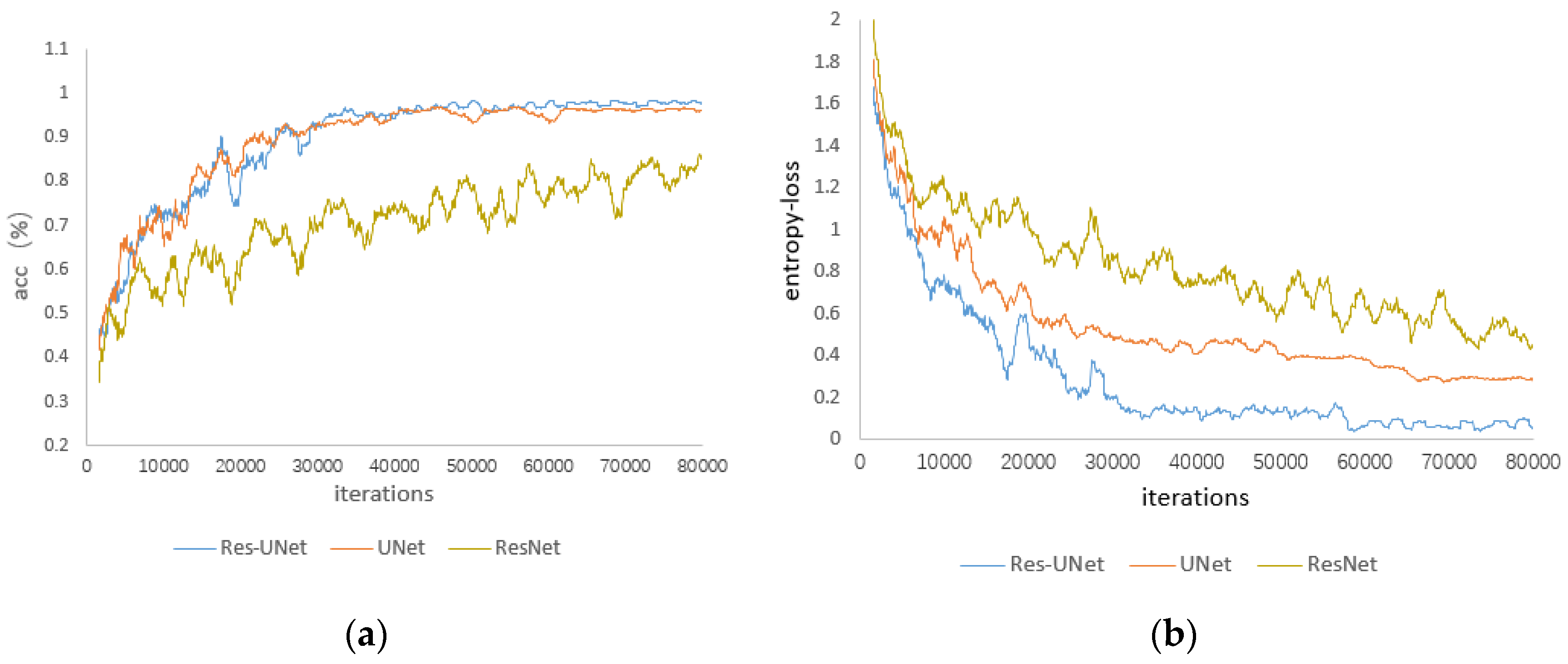

| Type | Common Name | Note |
|---|---|---|
| Nonforest land | Roads | Nonforest land mainly includes roads |
| Forest land | Other forest land | Mainly includes some auxiliary production land |
| Cunninghamia lanceolata | Pure Chinese fir forests | |
| Eucalyptus robusta | Large area eucalyptus, there are many logging areas in the forest | |
| Illicium verum | Pure Illicium verum forests | |
| Pinus massoniana | Pure Pinus massoniana forests | |
| Pinus elliottii | A small amount of pure wetland pine forest land | |
| Mytilaria laosensis | Mytilaria laosensis and Chinese fir mixed forest | |
| Other broad-leaved | Small amount of unknown broadleaf |
| Type | Training Samples | Validation Sample |
|---|---|---|
| Eucalyptus | 288 | 72 |
| Illicium verum | 260 | 65 |
| Roads | 120 | 30 |
| Pinus massoniana | 168 | 42 |
| Mytilaria laosensis | 111 | 28 |
| Other broad-leaved | 76 | 19 |
| Other forest land | 200 | 50 |
| Chinese fir | 224 | 56 |
| Pinus elliottii | 153 | 38 |
| Total | 1600 | 400 |
| Number of Samples | 40% | 60% | 80% | 100% |
|---|---|---|---|---|
| Overall Accuracy | 70.41% | 79.87% | 84.28% | 87.51% |
| Average Accuracy | 70.09% | 78.69% | 82.17% | 85.43% |
| Kappa Coefficient | 0.683 | 0.773 | 0.815 | 0.842 |
| Method | ResNet (Linear Interpolation + CRF) | UNet (Linear Interpolation + CRF) | Res-UNet (Deconvolution + CRF) | Res-UNet (Linear Interpolation + noCRF) | Res-UNet (Linear Interpolation + CRF) |
|---|---|---|---|---|---|
| Overall Accuracy (%) | 68.25 | 75.34 | 81.67 | 84.76 | 87.51 |
| Average Accuracy (%) | 65.12 | 74.45 | 81.09 | 85.23 | 85.43 |
| Kappa Coefficient × 100 | 65.52 | 73.28 | 80.34 | 83.15 | 84.21 |
| Eucalyptus | 71.58 | 80.12 | 87.45 | 88.24 | 88.37 |
| Illicium verum | 84.32 | 81.09 | 85.21 | 87.13 | 87.62 |
| Roads | 68.15 | 74.58 | 81.07 | 82.97 | 83.57 |
| Pinus massoniana | 69.07 | 76.43 | 86.58 | 85.04 | 87.14 |
| Mytilaria laosensis | 58.23 | 61.98 | 72.32 | 75.36 | 78.65 |
| Other broad-leaved | 49.67 | 54.37 | 51.08 | 66.15 | 70.41 |
| Other forest land | 49.82 | 70.13 | 76.42 | 80.73 | 83.14 |
| Chinese fir | 55.89 | 72.64 | 79.21 | 85.43 | 86.01 |
| Pinus elliottii | 41.45 | 70.51 | 80.34 | 85.03 | 87.15 |
| Method | ResNet | Unet (Deconvolution) | Unet (Interpolation) | Res-UNet (Deconvolution) | Res-UNet (Interpolation) |
|---|---|---|---|---|---|
| Number of parameters | 1,863,344 | 8,902,602 | 8,558,090 | 59,131,530 | 55,984,266 |
| Prediction time (s) | 112 | 110 | 111 | 126 | 127 |
| Training time (h) | 4 | 1 | 1 | 13 | 13 |
© 2020 by the authors. Licensee MDPI, Basel, Switzerland. This article is an open access article distributed under the terms and conditions of the Creative Commons Attribution (CC BY) license (http://creativecommons.org/licenses/by/4.0/).
Share and Cite
Cao, K.; Zhang, X. An Improved Res-UNet Model for Tree Species Classification Using Airborne High-Resolution Images. Remote Sens. 2020, 12, 1128. https://doi.org/10.3390/rs12071128
Cao K, Zhang X. An Improved Res-UNet Model for Tree Species Classification Using Airborne High-Resolution Images. Remote Sensing. 2020; 12(7):1128. https://doi.org/10.3390/rs12071128
Chicago/Turabian StyleCao, Kaili, and Xiaoli Zhang. 2020. "An Improved Res-UNet Model for Tree Species Classification Using Airborne High-Resolution Images" Remote Sensing 12, no. 7: 1128. https://doi.org/10.3390/rs12071128
APA StyleCao, K., & Zhang, X. (2020). An Improved Res-UNet Model for Tree Species Classification Using Airborne High-Resolution Images. Remote Sensing, 12(7), 1128. https://doi.org/10.3390/rs12071128






